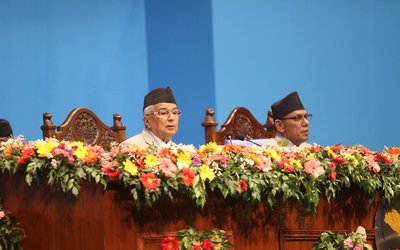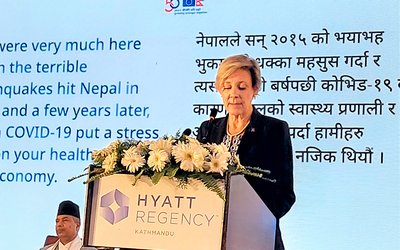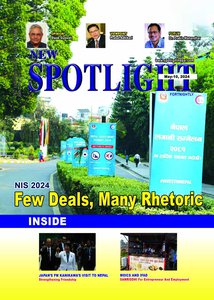
A much-awaited legislation on Disaster Risk Reduction and Management (DRRM) was endorsed in 2017 replacing the Natural Calamity Relief Act of 1982 that focused primarily on rescue and relief efforts. The new Act has covered the broader spectrum of diversity of disaster and disaster cycle management – preparedness, response, recovery and mitigation. The Act has promoted proactive DRR towards resilience building.
What have been done in the spirit of this Act in the past two years in terms of preparedness and mitigation? In line of the federal structure, what have been done to establish institutional set-up and to strengthen role and capacity of the local government, and local and community disaster management committees?
And, what is the status of establishing a National Disaster Risk Reduction Management Authority (NDRRMA) for DRR and Management in the federal context. The authority is critical for the overall disaster operation including coordination, facilitation, research and studies, database management and mobilization of international assistance.
Nepal is exposed to multiple recurrent hazards. Due to climate change, monsoon patterns are changing that add further complexity in the preparation for more extreme weathers. Every year, the monsoon rains have caused floods in the Terai and landslide in the hills causing significant damage and loss of lives, livelihoods and properties.
Over the past week, rains have hit 30 districts including the capital. Hundreds of villages in have been affected in the Terai and the hills. Dozens of people have died and thousands have been displaced from their homes in Provinces 1, 2 and 3. The problem in the Terai is largely the matter of flooding and inundation.
The durable solution to flooding and inundation lies in geopolitical relationship between Nepal and India. The successive governments in Nepal has failed to prevent construction of embankments by India on the side of Nepal border while the rapid construction of roads and infrastructure without DRR consideration on Nepal side is also a concern.
Nepal and India have had joint committee and joint studies to address the inundation issues along the Nepal-India border. It’s a high time that both India and Nepal take the flooding and inundation problem seriously by either demolishing or adjusting embankments. Can we resolve it through bilateral discussion or we need arbitration?
Let us not further delay in establishing National Disaster Risk Reduction Management Authority. Unfortunately, the house is adjourned at this time due to the dispute between the government and the opposition parties at this time of national crisis.
Meanwhile, let us support every victim to save her/his lives with dignity. Let the provincial and local governments provide opportunity to respond at the local level in a more decentralized way without needing multiples approvals from the government.
Learning from the past, there must be total transparency in terms of sources and uses of funds of Central Level Disaster Management Fund, as well as other resources mobilized by national and international agencies. They must be subjected to public audit.
Further, there must be functional complaints handling processes to address grievances from the affected population. Finally, this is not to forget that the community people are the first responder to any humanitarian crisis. They must be consulted in all aspect of DRR and disaster management.
- Nepal Investment Summit: Unlocking Economic Potentials For Growth And Development
- Apr 28, 2024
- Investing In Women: Accelerating Progress
- Mar 10, 2024
- Embracing The 'Empty Chair: Advancing Global Inclusivity And Equitable Development
- Dec 29, 2023
- Mental Health In Youth
- Jul 16, 2023
- Controversial Constituency Development Fund in Nepal: Public Concerns
- Jun 18, 2023

















